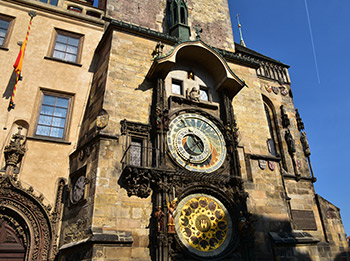BITE-SIZED HISTORY
Published in Issue 1 (January/February 2019), News, Volume 27BY TONY CANAVAN
New life for Belfast courthouse
A new landmark hotel for Belfast is set to open in the Crumlin Road Courthouse. This historic building has remained derelict for years, with a number of plans published on what to do with it. After all those false starts, however, it seems that developer Lawrence Kenwright can proceed with a £20m project to convert the old courthouse into a luxury hotel. Belfast City Council gave the green light for the restoration and conversion of the Victorian building into a 77-bedroom hotel. The Crumlin Road Courthouse was designed by the famous architect Charles Lanyon and opened in 1850. Prisoners from the Crumlin Road Gaol were brought across the road to court by an underground passage. It witnessed some historic trials over the decades and was the occasion of some of the most infamous trials during the North’s Troubles. It was closed in June 1998 and left to fall into dereliction. I wonder how the new hotel will reflect the building’s colourful past?
Insight into medieval Ireland
Two medieval rings and a silver brooch have been found in separate discoveries in counties Down and Antrim. The rings, believed to date from the thirteenth–fourteenth century, were found a short distance apart at Bright, near Ardglass, while the silver brooch was discovered near Dunseverick on the north Antrim coast. The rings were tarnished in appearance but have been tested as silver, with the surface of both divided into a number of panels, some with a cross-style motif. The decoration of one ring has a flower pattern and traces of lettering, believed to say in Latin Iesu Rex exaudi nos (‘Jesus, king, hear us’). They were found close to the ruins of Castle Bright, Ardglass, suggesting that they could have been lost by someone from the castle. The silver brooch, meanwhile, found at Lisserluss, near Dunseverick, is believed to date back to the eighth or ninth century. It is similar to the so-called Tara brooch from Bettystown, Co. Meath, one of the great treasures of Irish Christian art. The brooch, consisting of a circular hoop and pin, is badly damaged, however. It was found near what was remembered in the 1830s as a graveyard, raising the possibility that it may have accompanied the burial of a Viking or someone of Viking ancestry.
Prague’s famous clock back on time

Above: Prague’s famous astrological clock—first major overhaul since the Second World War.
‘The Great War 1918: Death, Disease and Decisions’
Mid-Antrim Museum’s four-year programme to mark the centenary of key dates of the First World War comes to an end with ‘The Great War 1918: Death, Disease and Decisions’. This chronicles the final battles up to the war’s ending with the armistice. The exhibition considers the war’s aftermath: the stories of local soldiers who returned home to a changed world, and how local communities in north Antrim came together to build monuments to the war dead. It also takes in the wider context, including women’s suffrage, the Representation of the People Act, the general election, and the Spanish ’flu. The exhibition continues until 12 January 2019. Further info: midandeastantrim.gov.uk/museums.
















